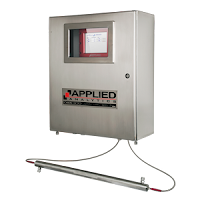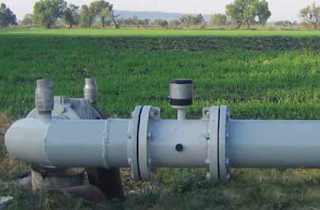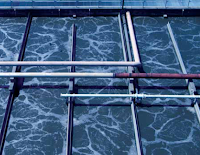Wishing you and yours the happiest of holidays and a bright and successful New Year!
Educational information on process control, industrial instrumentation, valves, valve automation and control valves. For additional information visit IvesEquipment.com or call 877-768-1600
Seasons Greetings from Ives Equipment
Season’s Greetings! In warm appreciation of our association during the past year, we extend our very
best wishes for a happy holiday season.
Wishing you and yours the happiest of holidays and a bright and successful New Year!
Wishing you and yours the happiest of holidays and a bright and successful New Year!
Monitoring Interface Between Compounds in a Pipeline
 |
| Applied Analytics™ OMA |
Since the pigs are never completely effective at blocking the interface, a significant volume does suffer intermixing and must be removed for reprocessing. The amount of material routed to reprocessing is usually just pre-programmed with a large margin of error on either end of the interface to ensure removal of intermixed products. This is a simplistic model that is unnecessarily wasteful of material and time.
By using a device such as the Applied Analytics™ OMA industrial analyzer, the chemical concentrations, purity, and physical properties can be measured in a continuously drawn sample from the liquid stream. This allows for real-time analytics of the materials in the pipe, including chemical concentrations, purity, and color.
The OMA system continuously monitors full-spectrum absorbance in the pipeline stream. A change in this spectrum indicates a change in the purity/composition of the material passing through the pipeline. Therefore, the OMA immediately detects the ‘interface’ point where the material has begun to intermix with the subsequent material in the pipeline.
Monitoring the 1st derivative of a complete UV-Vis/SW-NIR absorbance spectrum allows the OMA to detect changes in composition with high sensitivity and fast response. The user can define the threshold contamination level which will signal for rerouting of the stream.
For more information, contact Ives Equipment at http://www.ivesequipment.com or call (877) 768-1600.
Flow Meter for Efficient and Cost-effective Use of Water for Irrigation
 |
| Irrigation flow meter in the field (courtesy of SIEMENS) |
Few resources are as vital to the human population, and the global economy as water. To ensure the continuous preservation of this valuable commodity, the water industry has
 |
| On-site testing and validation via SIMATIC PDM tool. |
Features to be considered for irrigation flow meters:
- Battery-powered for greater flexibility in the field
- Accuracy
- Maintenance-free operation
- Tamper-proof and robust
- Flexible communication
- Qualification certificate
- Wireless solution
Benefit of the SITRANS F M MAG 8000
- Simple meter placement - floating chamber IP 68 (NEMA 6P) design ensures continuous filterless performance regardless of position or in-line piping stresses, even when buried underground
- Low pressure loss - unrestricted flow tube ensures minimal pressure loss even at high flow rates and reduces overall network system pressure, helping to prevent leakage from burst pipes and excess stress placed on pumping stations
- Zero maintenance – no moving parts and 10-year battery life
- Bi-directional measurement - only one meter required for measurement in both directions
- Installation requires 0D inlet to and outlet from the sensor - eliminating concerns about where the meter is installed
- Intelligent meter – capable of leak detection, data logging and error self-detection
- Remote capabilities – stay up-to-date on measurement data without having to visit the site through optional GSM/GPRS Wireless Communication Module
For more information, contact Ives Equipment by visiting http://www.ivesequipment.com or calling (877) 768-1600.
Labels:
Delaware,
MAG 8000 Irrigation,
Maryland,
New Jersey,
New York,
Pennsylvania,
Siemens,
Virginia
Special Application Challenges Call For High Performance Butterfly Valves
 |
| Series 400 High Performance Butterfly Valve ABZ Valve |
Industrial valves intended for extreme applications are generally referred to as severe service or high performance valves. While there are plenty of published and accepted standards for industrial valves, one does not exist to precisely define what constitutes a severe service valve.
So, how do you know when to focus valve selection activities on severe service or high performance valves, as opposed to those rated for general purpose? There are a number of basic criteria that might point you in that direction:
- Extreme media or environmental temperature or pressure
- High pressure drop operation that may cause cavitation
- Rapid or extreme changes to inlet pressure
- Certain types or amounts of solids contained in the fluid
- Corrosive media
Certainly, any of these criteria might be found in an application serviceable by a general purpose valve, but their presence should be an indicator that a closer assessment of the fluid conditions and commensurate valve requirements is in order. The key element for a process stakeholder is to recognize when conditions are contemplated that can exceed the capabilities of a general purpose valve, leading to premature failure in control performance or catastrophic failure that produces an unsafe condition. Once the possibility of an extreme or challenging condition is identified, a careful analysis of the range of operating conditions will reveal the valve performance requirements.
There are numerous manufacturers of severe service or high performance valves, each with specialized product offerings focusing on a particular performance niche. ABZ Valve manufactures high performance butterfly valves ranging from 2-48 inches and 150-600 psi. The valve design is ideal for manual or automated actuation, installed with a manual hand gear, electric actuator, or a pneumatic actuator. Seats are available as soft, metal, and fire safe, and body types include wafer, double flanged, and butt-welded. Construction materials include carbon steel and 316 stainless steel. A range of options and variants are available to customize the valve build to suit a replacement or new installation.
More information about the ABZ Valve high performance offering is included below. You can always get more information and discuss your special requirements with a valve specialist. They have application experience and access to technical resources that can help with selecting the right valve components to meet your severe service and high performance applications.
Your Plant's Partners Make A Huge Difference in Performance and Profitability
The business relationships you make and the partnerships you choose have a dramatic impact on your plant operations. Choosing the right instrumentation and process equipment partner will save you time, money, and make your plant safer.
The Ives business is built on a foundation of quality people, highly trained and experienced, who take a keen interest in finding the optimum solutions to customers' control problems. If you need a proven, experienced, and reliable business partner, choose Ives.
A Proven Ultrasonic Level Transmitter for Environmental, Water/Wastewater, and Energy Management Industries
 |
| Reliable level control for environmental applications SITRANS LU150/180 |
Designed primarily for liquid applications in the environmental, water/wastewater, and energy management industries, the device is ideal for non-contact continuous level measurement of liquids and slurries in open or closed vessels.
The reliability of the level readings are based on Sonic Intelligence echo processing algorithms that Siemens has been refining for decades. These algorithms differentiate the true material level echoes from the false ones that can result from acoustic or electrical noises, as well as from agitator blades in motion. It's effective, accurate, unique, and it's exclusively Siemens.
Key Applications
- Chemical storage vessels
- Filter beds
- Mud pits
- Liquid storage vessels
- Food applications
For more detailed information, check out the brochure below:
Industrial pH Control Basics
 |
| pH sensor courtesy of HF Scientific |
 |
| pH display courtesy of HF Scientific |
Accurately applying the correct amount of reagent to an acid or base solution can be challenging due to the logarithmic characteristics a pH reaction in a solution. Implementing a closed-loop control system maintains the pH level within a certain range and minimizes the degree to which the solution becomes acidic or alkaline.
An example of an automatic pH level control system is a water treatment process where lime softened water is maintained at a pH of 9 using carbon dioxide as a reagent. As the untreated water (or influent) enters the tank, the pH is continuously monitored by the pH sensor. The sensor is the feedback device to the controller where the setpoint is compared to the control value. If the values are not equal, the controller sends a signal to the control valve that applies carbon dioxide to the tank. The reagent is applied to the tank at varying rates to precisely control the pH level. With the pH level at 11 detected by the sensor, the controller commands the control valve to open and introduce more carbon dioxide. As the increased carbon dioxide mixes with the influent, the pH is lowered in a controlled manner. Reaching the setpoint, the carbon dioxide flow is minimized and the process is continually monitored for variation. The effluent is the treated water that is discharged out of the tank. The process continues to provide the lime softened water at the desired pH level.
Labels:
control,
Delaware,
HF Scientific,
Maryland,
New Jersey,
New York,
Pennsylvania,
pH,
Virginia,
wastewater treatment,
water
Subscribe to:
Comments (Atom)
